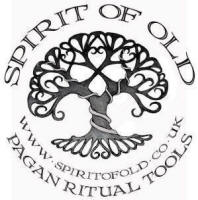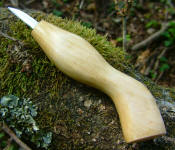|
Botanical name:
Fraxinus excelsior
Name origins: The name "Ash" may relate to "great fire blaze" or
"heaven" as the ash, like Oak, seems to attract lightning.
Folklore:
The
ash appears in Norse mythology as "Yggdrasil", the world tree which
links the realms of existence. The word "yggr" derives from the Greek
"hydra" meaning the sea or the element of water. The tree of Yggdrasil
had its roots extending below our realm of existence into the
underworld, the trunk was in our realm known as "middle earth" and its
branches extended high above our realm into the upperworlds.
Also in Norse
mythology, Odin hung from Yggdrasil for nine days and nine nights to
gain the secrets of the runes in exchange for one of his eyes.
In Celtic mythology,
the Ash was sacred to Gwydion as a tree of enchantment, from whose
twigs he made his wands. It links the three circles of existence -
past, present and future - continual birth and rebirth.
Magickal uses:
As the ash represents Yggdrasil linking all realms of existence,
an ash staff may be placed at the centre of the circle to connect with
the realms.
The spiral arrangement
of the buds on the ash reminds us of the ancient cycle of death and
rebirth. It shows us our connection to the wheel and the wood may be
used at rites of passage.
It symbolizes a key to the understanding of how all things are linked
and connected. Our thoughts and actions form an endless chain of
events in the outer material world aswell as in the inner spiritual
realms.
A Druidic Ash wand was found in Angelsey dating from the first century
AD featuring a spiral decoration. |














